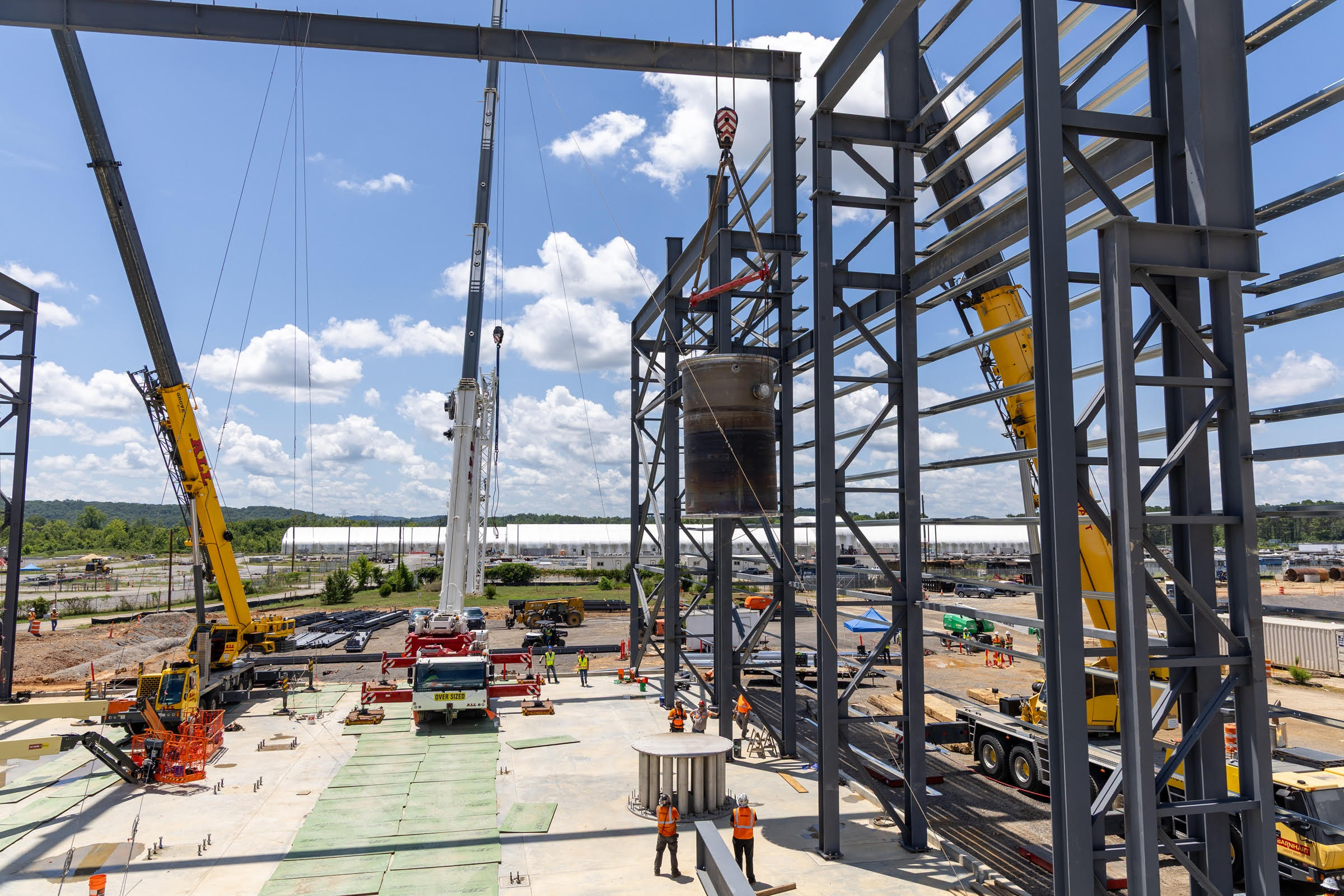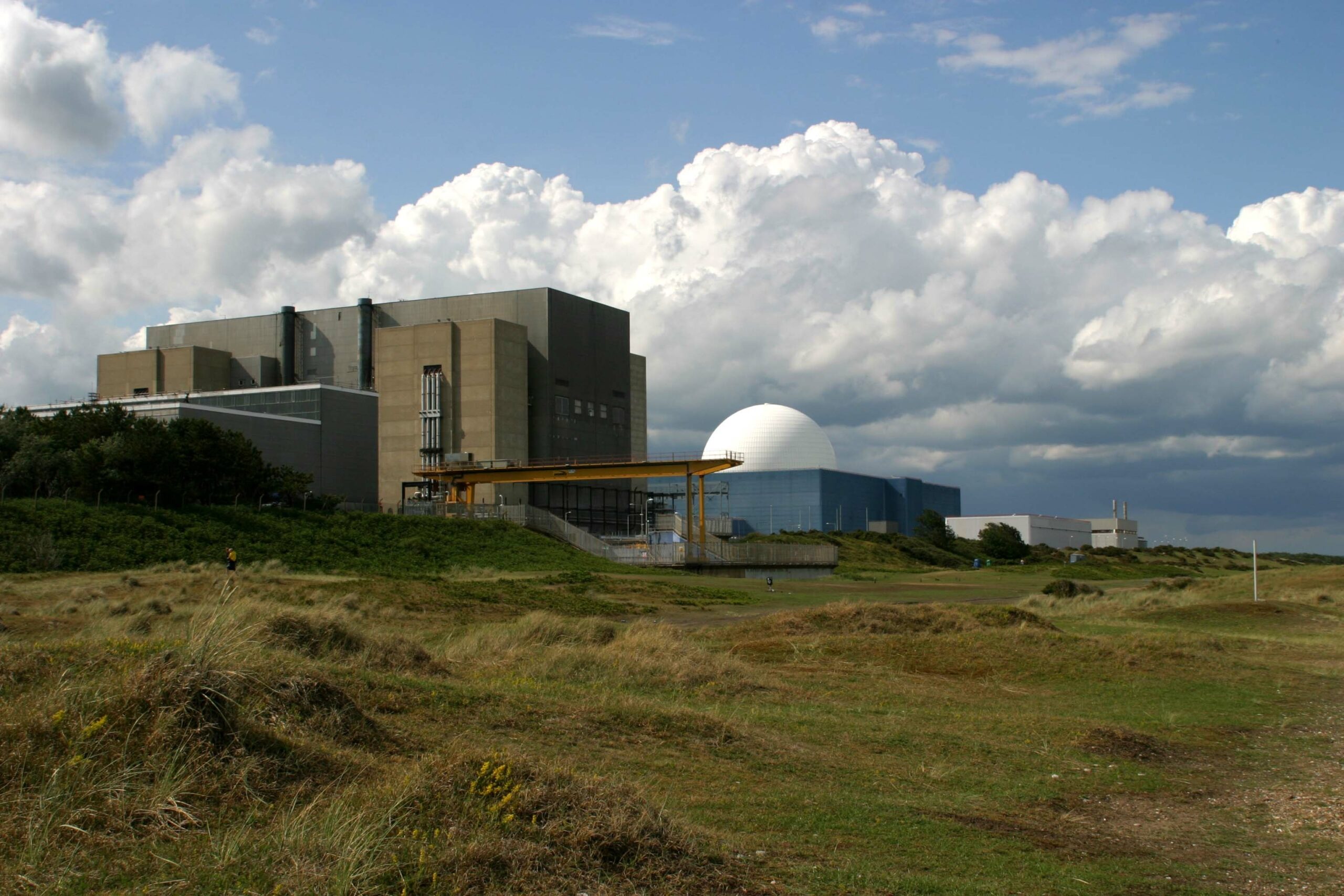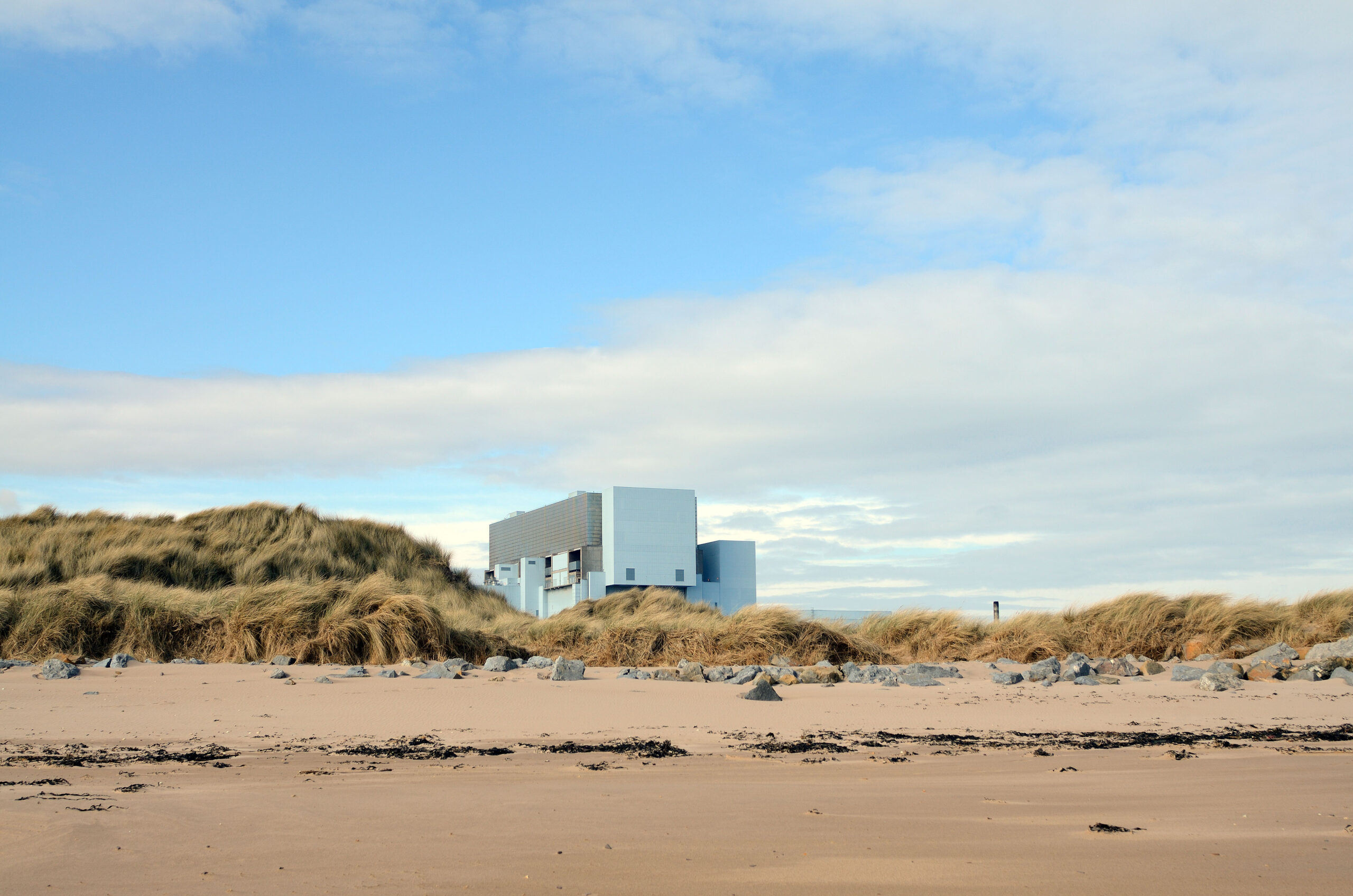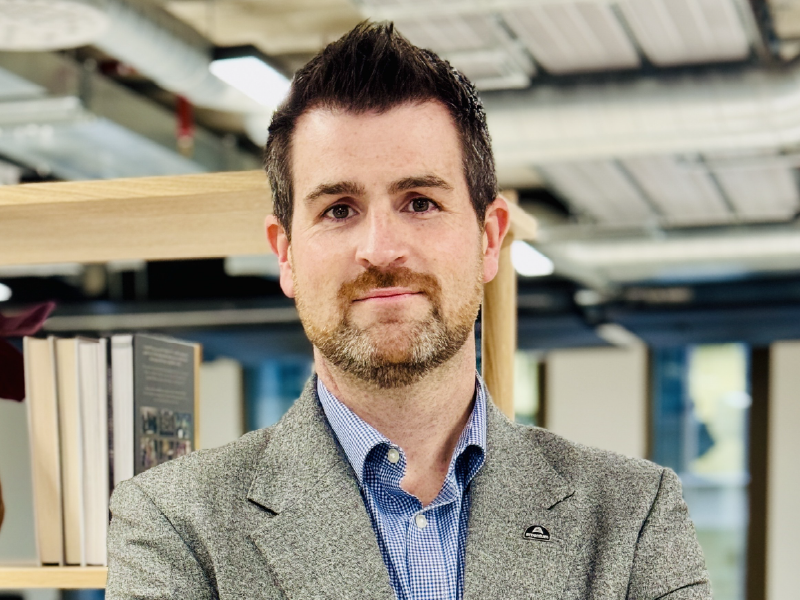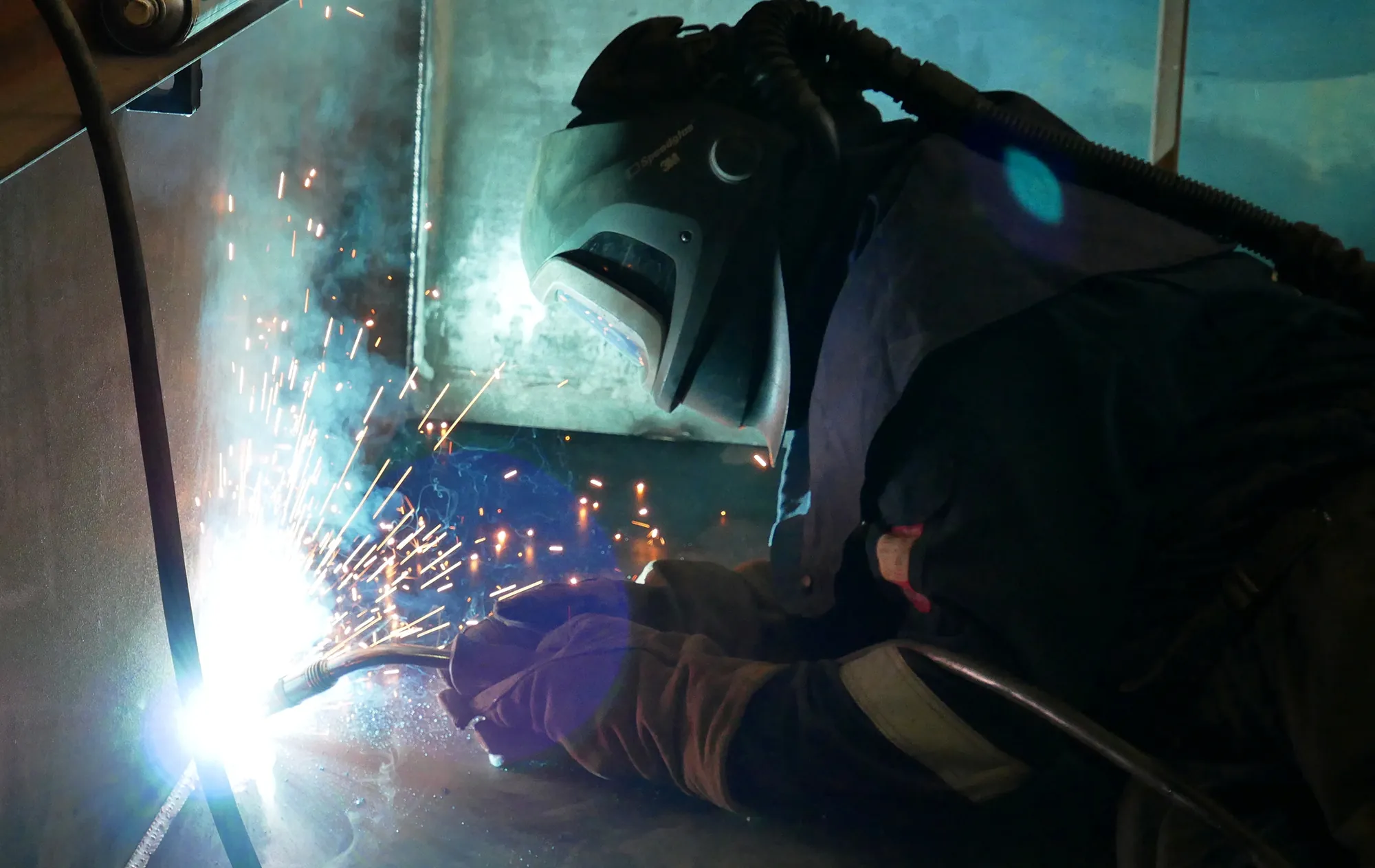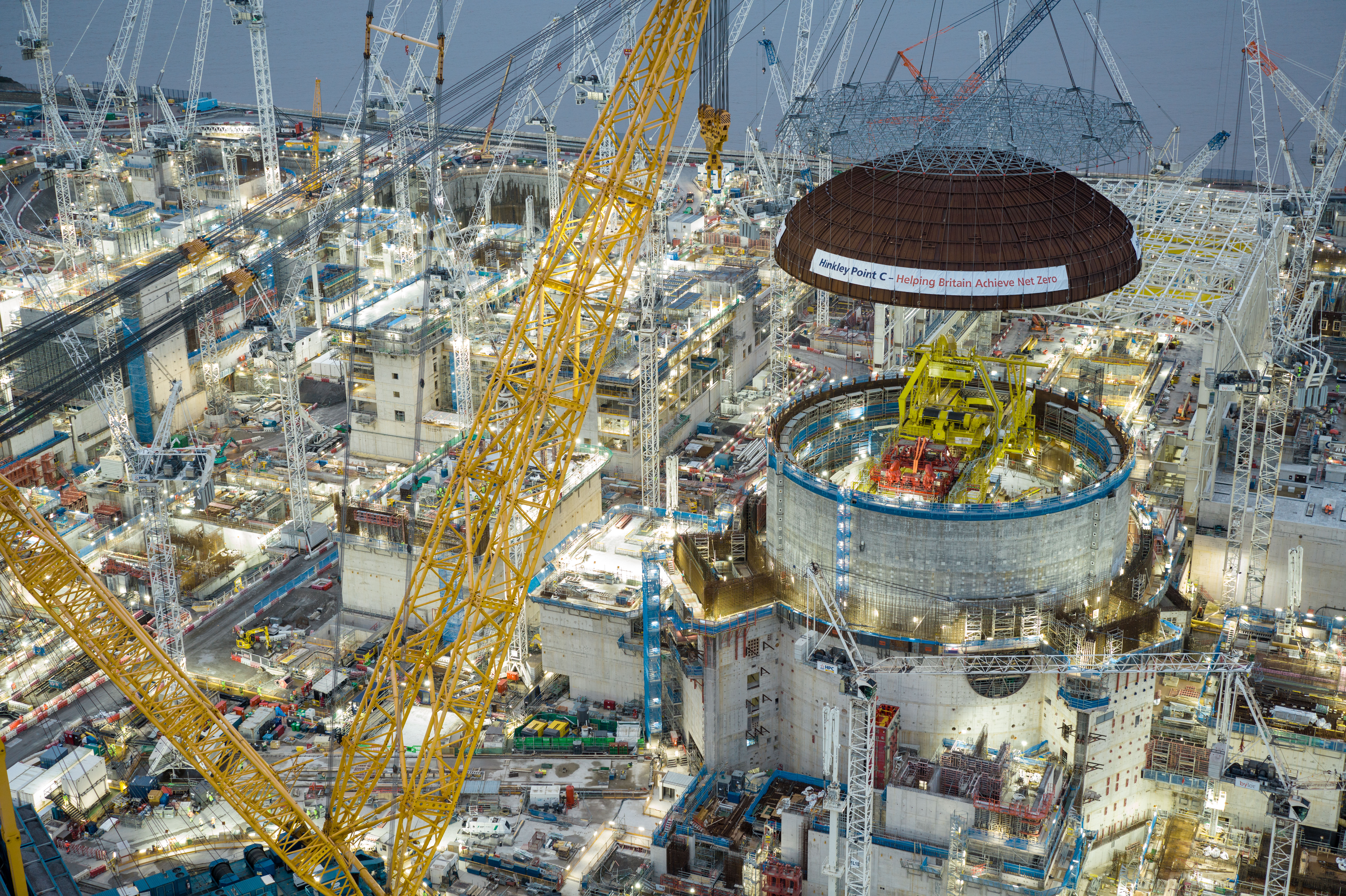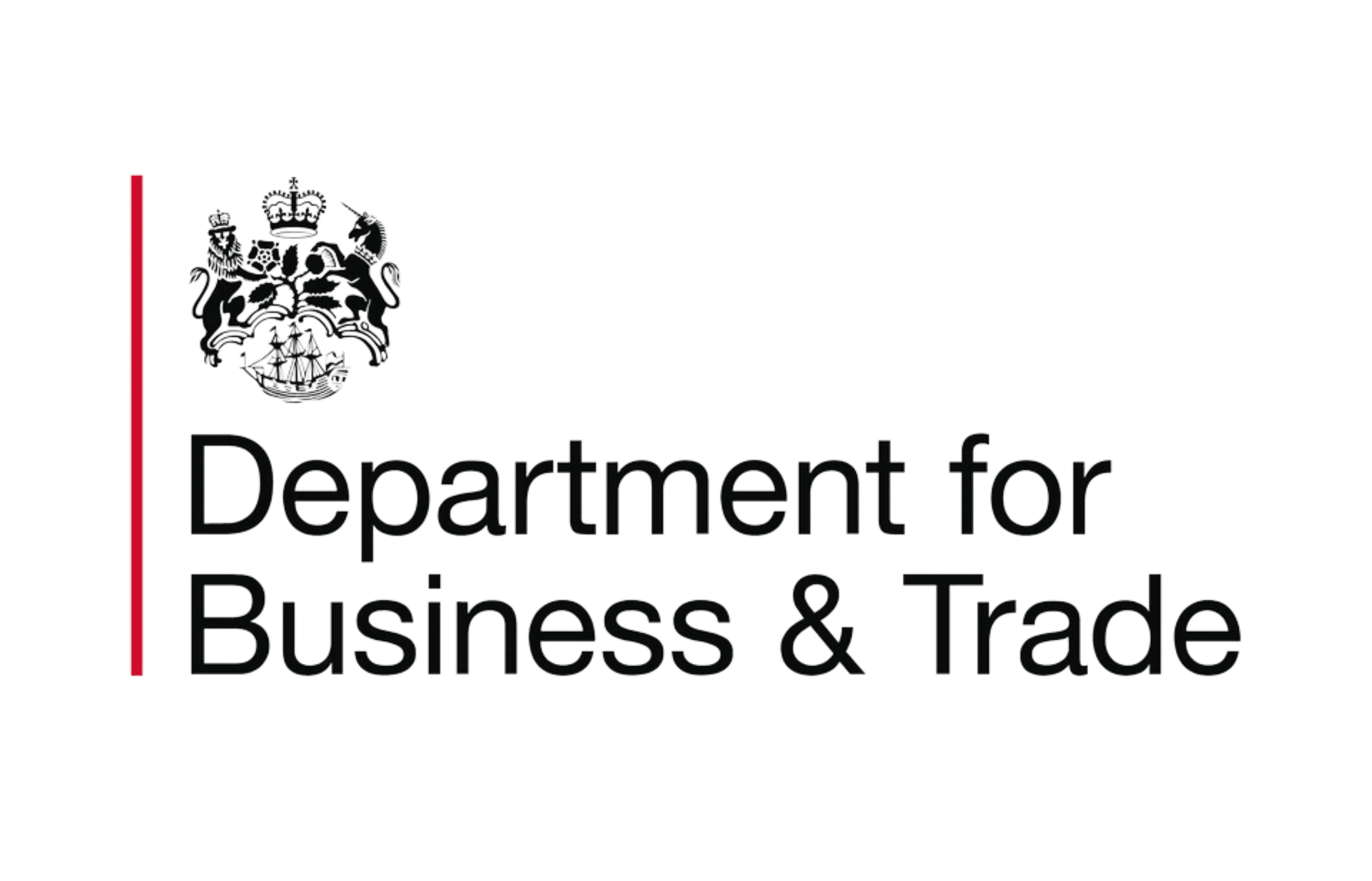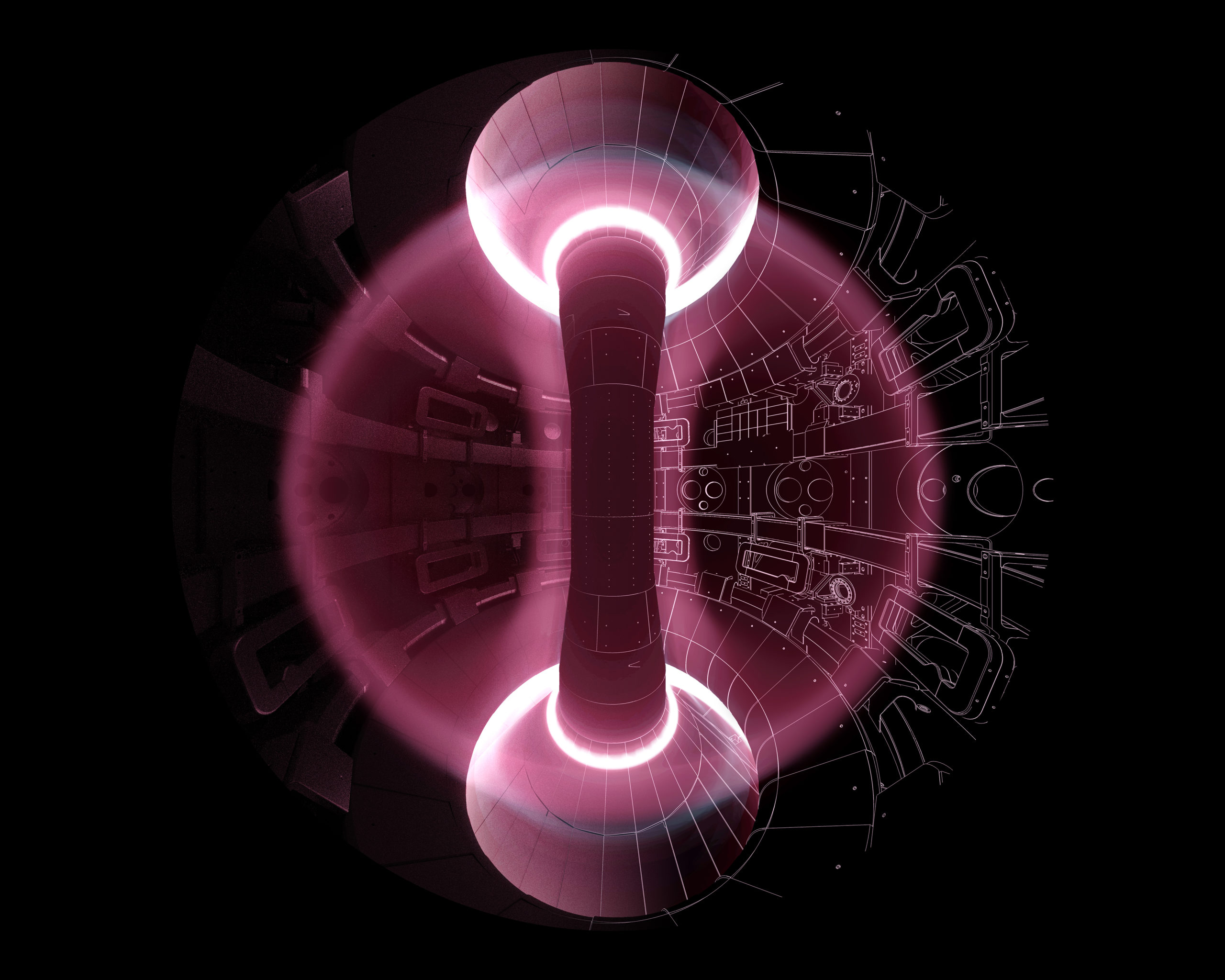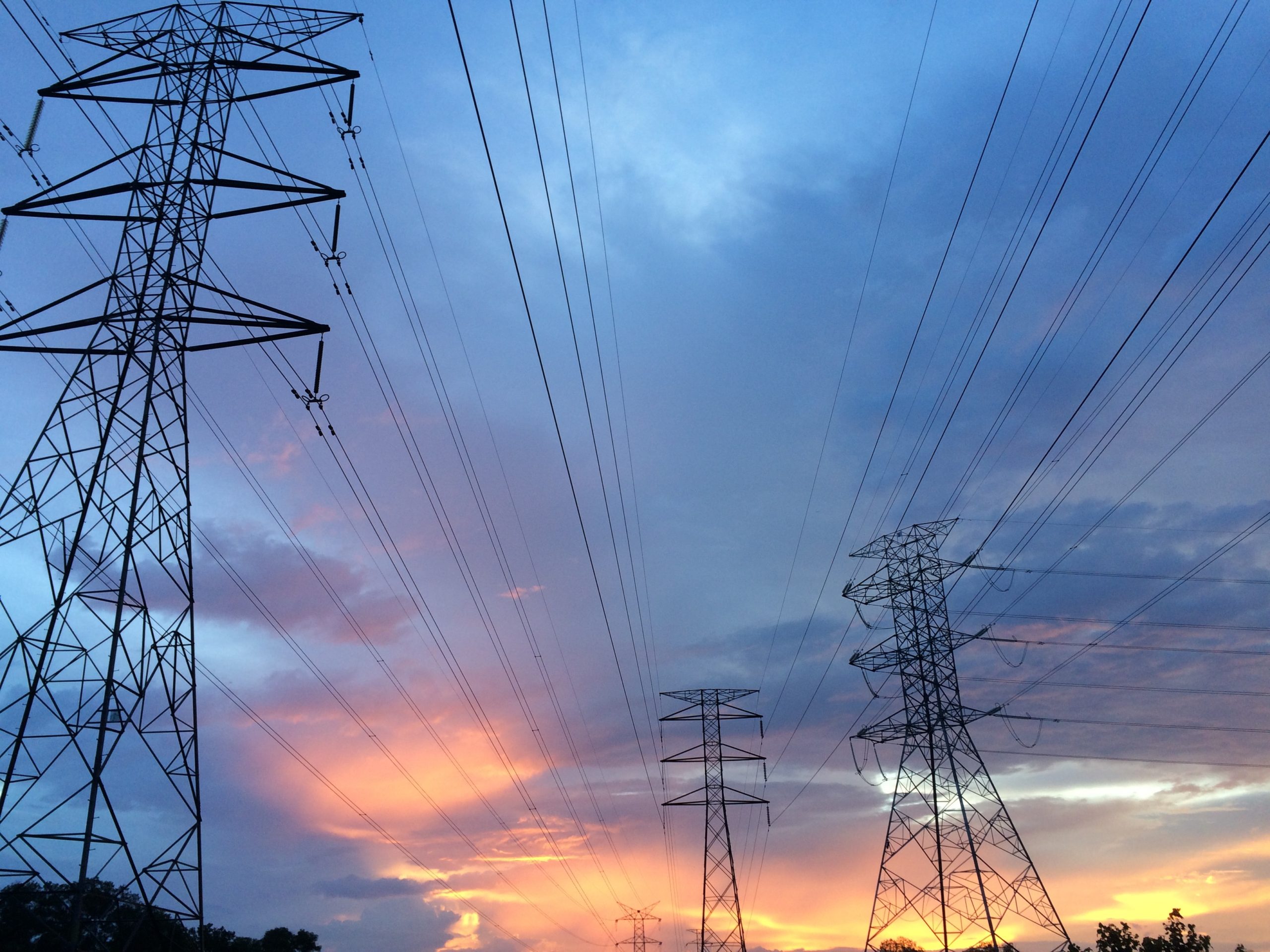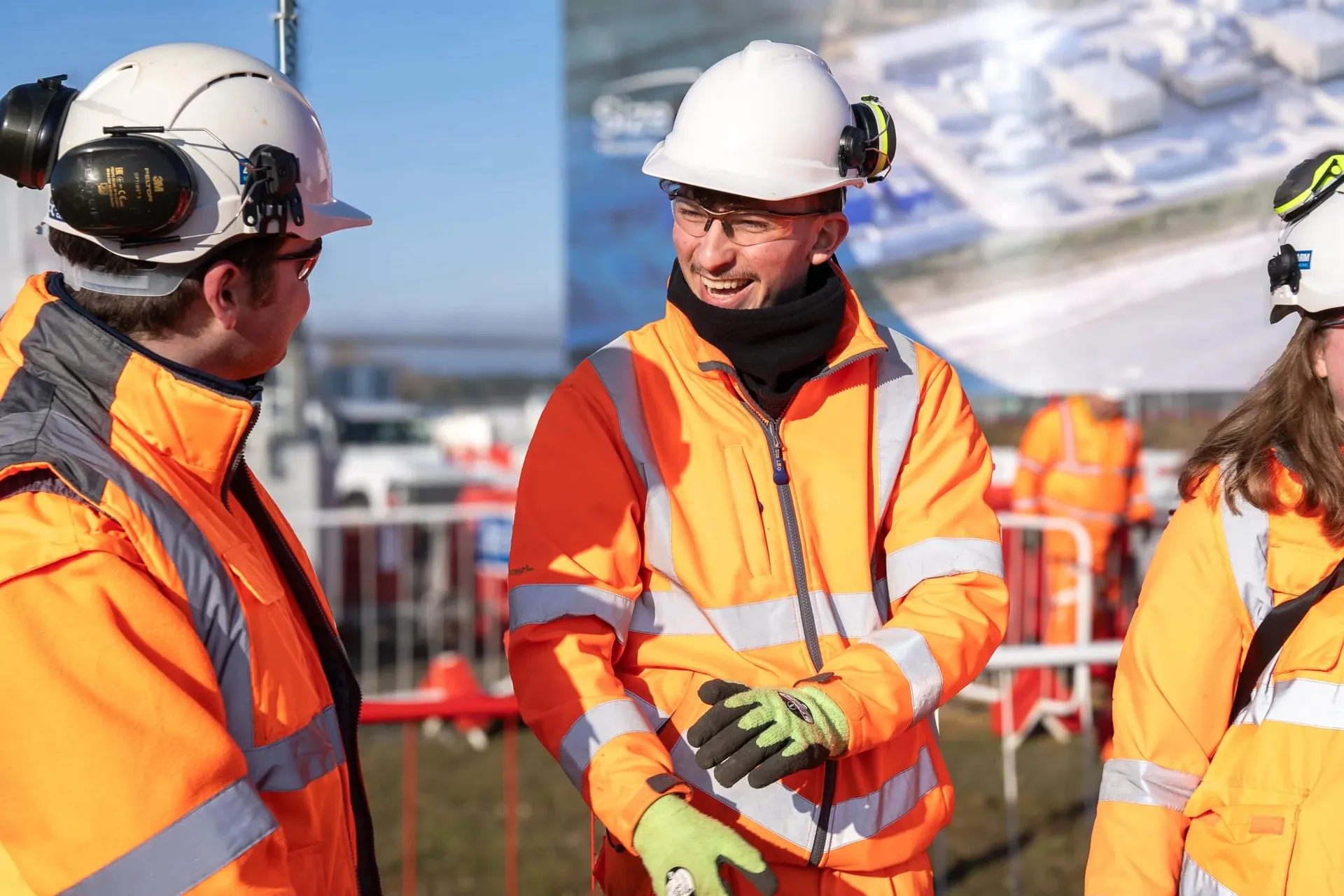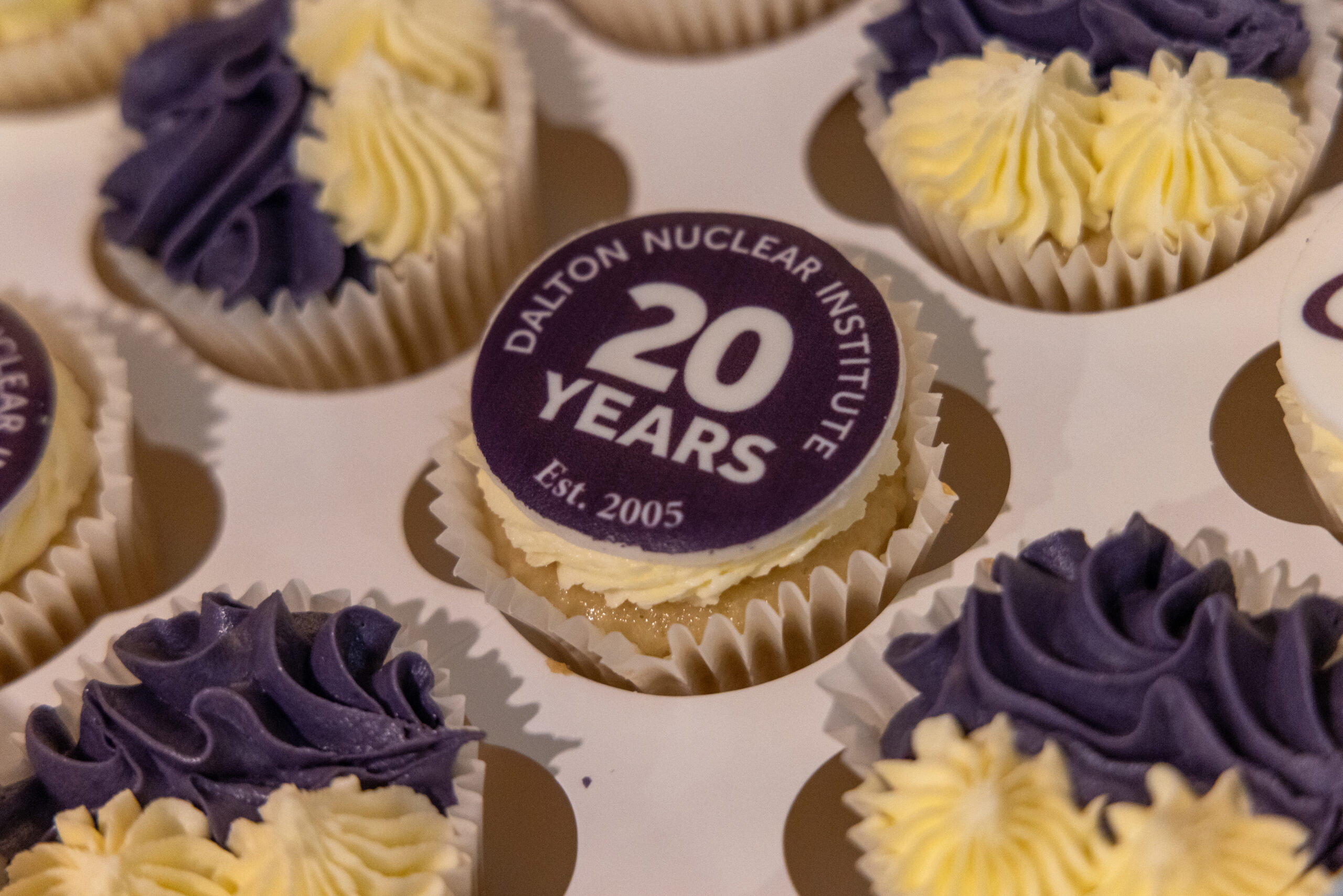A test unit small modular reactor (SMR) vessel, fabricated in partnership with the University of Sheffield Advanced Manufacturing Research Centre (AMRC) and Cambridge Vacuum Engineering (CVE), has been successfully installed by the US-based nuclear energy company, Kairos Power, at its USA campus in Tennessee.
The 14-foot-high reactor vessel is the central component in Kairos Power’s non-nuclear reactor mockup, and its installation marks a significant milestone for the US-based company in the construction of its third Engineering Test Unit (ETU 3.0).
Supported by the U.S. Department of Energy, Kairos Power is using its Engineering Test Unit programme to validate a safe, cost-effective pathway for the future deployment of advanced nuclear reactors in the United States.
Leveraging industry and academic partnerships, Kairos is piloting the use of innovative engineering techniques and construction processes that can help lower costs and accelerate production timelines for a future commercial fleet of SMRs that will support the clean energy transition in the U.S.
The University of Sheffield AMRC brought its unique expertise and capability to the ETU project, integrating various advanced manufacturing technologies under one roof – including CVE’s advanced welding technology. The AMRC’s capability to manage machining, welding and inspection in a single location allowed for the fabrication of a complete vessel rather than individual parts, proactively addressing potential future issues.
Ben Morgan, interim CEO at the University of Sheffield AMRC, said: “Large demonstrators like the ETU 3.0 reactor vessel are vital for effectively bringing advanced manufacturing methods into industry, offering a holistic solution for fabricating complex, large-scale components.
“The collaborative efforts of CVE, Kairos Power and the AMRC in addressing the complexities of welding, fixturing, machining and inspection for ETU 3.0 will undoubtedly accelerate the deployment of advanced nuclear technologies for clean, affordable and secure power.”
The ETU 3.0 reactor vessel was fabricated using a cutting-edge electron beam welding technology from CVE, which produces high-quality welds at least an order of magnitude faster than conventional arc welding. For example, welds that previously took one week during the fabrication of the ETU 2.0 vessel were completed in approximately ten minutes for ETU 3.0.
Bob Nicolson, CVE managing director, said: “Our collaboration with Kairos Power and the team at AMRC underscores the transformative potential of electron beam welding in advanced manufacturing. The technology scales well to the precise and demanding requirements of nuclear construction, and this partnership represents a significant step forward in SMR commercialisation.”
The ETU 3.0 project allowed Kairos Power to evaluate the use of electron beam welding to enable faster, more cost-effective production of reactor vessels with precise tolerances for its future commercial fleet.
Craig Gerardi, vice president for manufacturing at Kairos Power, said: “The ability to test innovative production methods using full-scale non-nuclear hardware is a game-changer for Kairos Power.
“Collaborating with CVE and AMRC let us rapidly gain hands-on experience with electron beam welding that could transform how we deliver reactors for customers.”
Beyond its manufacturing innovations, the ETU 3.0 facility will serve as a vital proving ground to refine civil construction methods and quality assurance procedures for the Hermes Low-Power Demonstration Reactor, and will ultimately support the Hermes reactor as an operator training centre and test platform for remote handling and maintenance equipment.
Edward Blandford, chief technology officer and co-founder of Kairos Power, said: “The installation of our third ETU reactor vessel marks a significant moment on our commercial development pathway.
“ETU 3.0 will serve an important mission as a testing and training platform to ensure safe and efficient operations for the Hermes reactor. But, more broadly, the expertise and capabilities we gain from the ETU program will help pave the way to successfully deploy Kairos Power’s commercial fleet.”
The facility will help improve operator safety and reduce downtime by prequalifying procedures for maintaining and replacing high-temperature reactor systems and components. Capabilities to be tested will include shielded component transfer systems, heavy-lifting and positioning systems, and remote vision, control and feedback.
The ETU 3.0 building will also house a Modular Systems Facility where plant equipment modules for ETU 3.0 and the Hermes reactor will be staged, assembled, and tested prior to installation. The modular reactor construction methods being piloted with the ETU series and Hermes will be foundational to reducing construction costs and timelines for future plant deployments.
ENDS
